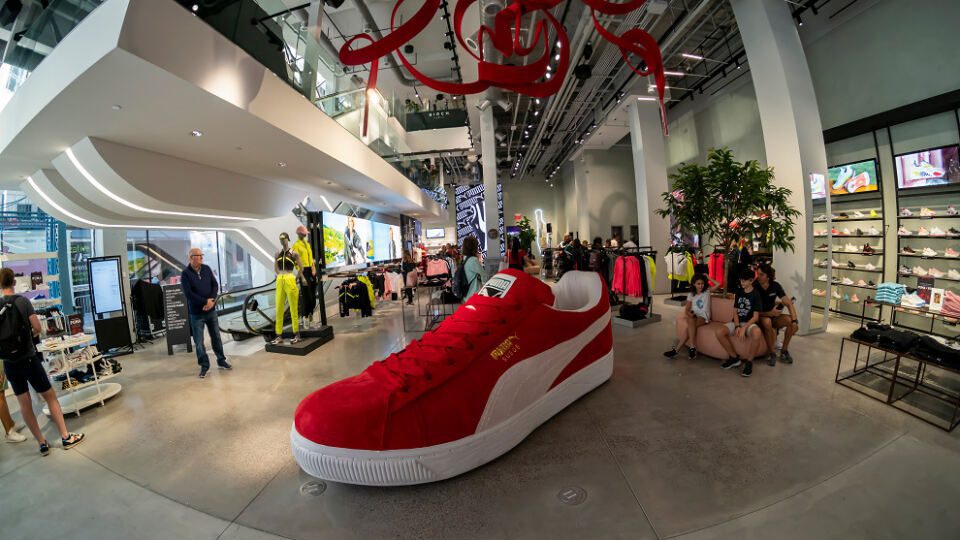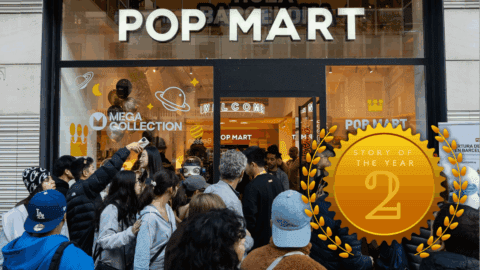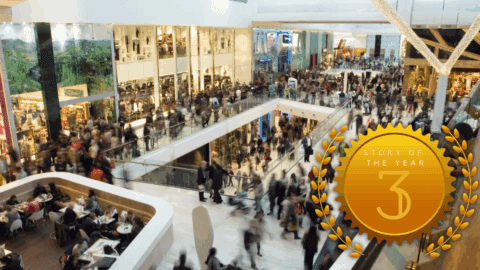“Experiential retail” is a phrase that has gotten a lot of play over the past few years. But like any hot trend that has garnered a lot of buzz (I’m talking about you, “omnichannel”), there has been confusion about what experiential retail actually entails — and how it can be done successfully.
“While experiential retail is a very valid term, it’s also been very abused in the industry just like the word ‘omnichannel,’” said Cate Trotter, Head of Trends at Insider Trends, a retail futures consultancy. “There are so many different [retail] spaces claiming to be experiential, but you walk in and realize very quickly that they’re not.”
So what is experiential retail, really?
At its core, Trotter defines experiential retail as non-mission-based shopping.
“Essentially, it’s something that gives people a reason to go in and spend time with a brand, even if they don’t think they want to buy,” said Trotter. “Another way of expressing this would be a brand or space that puts selling second. That’s why I think a lot of brands struggle with [experiential retailing], because it’s not built around selling. You have to be very clear on whether you actually want an experience or whether you want sales. You can’t muddy the purpose of the concept.”
But what does it take to do experiential retail well, and what will be key to success in the future? Trotter believes that experiential retail is:
1. Data-Driven: Trotter noted that one advantage retailers have today is access to more data than ever before to guide their experiential store strategies. “Whereas maybe five years ago a brand may have felt like it was taking a risk with [a new store concept], there are now all these different ways that retailers can predict the success of a store.”
For example, retailers can use store data to optimize staff performance, understand traffic flows and consumer behaviors and even measure how resonant different displays are: “They can use [all that data] to de-risk the process” of store and experience design, Trotter added. They can “know all the options that are out there and all the companies they can work with, so it ultimately becomes easier to launch a very forward-thinking experiential initiative.”
2. Flexible: In-store shopping behaviors are evolving, so what inspires consumers to spend more time (and money) in physical spaces is changing as well. That’s why more retailers are focusing on creating flexible and agile strategies that support their brick-and-mortar goals. For some retailers, that may mean investing more in pop-ups, which Trotter believes will continue to grow and evolve. For others, it may mean partnering with rotating concepts or “real estate on-demand” companies that allow them to test new markets.
“I’ve had this idea of a ‘USB store,’ which is basically a pop-up space where people can rent and set up a space,” Trotter said. Companies like Sook and concepts like Periodic fall into this new store category and give brands the flexibility to open up shop in new markets and get turnkey services to support design and branding.
3. Rooted in Lead Generation: About five years ago, the standard for store design was to create a space that allows people to walk in, have a good experience and then walk out again, Trotter explained. Now, brands are developing store concepts that encourage consumers to activate their shopping journeys and incent them to further engage online. “Now brands are saying ‘come in and have a look around, but maybe if you don’t want to interact with our exclusive exhibition, you need to connect with us somehow to get that extra perk, badge or offer you’re looking for,” she said. “And that could be through downloading the app, signing up for the email list or following the brand on social media.”
Trotter added that the main objective should be to use the store as a kickoff to a more long-term omnichannel engagement strategy, rather than a one-off experience that could, possibly, inspire a one-time purchase.
4. Augmented by Personalized Digital Engagement: After retailers generate a new lead, they have an opportunity to build a customer profile. The more a shopper engages with the brand, the more insight the brand can use to power one-to-one communication. “It’s a more sophisticated execution where a brand can actually offer personalized messaging — not just the same ‘join the email list’ message that will bore some customers to tears,” Trotter explained. For example, “it’s about allowing store-specific staff to send personal messages with products you may be interested in and information that is genuinely helpful to your life.”
5. Powered by Integrated Technology: Over the past two years the convergence between digital and physical channels has accelerated, largely thanks to the rise in virtual appointments and livestreaming. But Trotter believes these tech trends will extend far beyond the pandemic, meaning associates will need immediate access to technology to power these interactions at a moment’s notice.
“During the pandemic, we saw livestreaming and video shopping really take off, and I personally think that can be integrated into the same communication unit for staff,” Trotter noted. “I’m imagining either a smartphone or tablet that’s given to them, and these devices essentially serve as their control center for all things ‘store experience’. That way, they can see who’s made a booking for personal shopping, get all the product information they need, order items from the ecommerce warehouse, communicate with the customer and capture all the data they need. It’s essentially the link between the human and the digital out-of-store experience.”
6. Curated for VIP Customers: Many retailers are assessing their loyalty programs and attempting to integrate more exclusive perks, services and rewards to foster greater loyalty. Trotter predicts that physical spaces also will be incorporated, creating exclusive “watering holes” for their most loyal customers. “Loyalty schemes will become less reliant on spend and more on actions, and I think, in exchange, when people build up their loyalty points, they’re going to get more perks,” Trotter explained.
One such perk could be getting access to an exclusive part of the store. Trotter added that these spaces can be as simple as co-working and gathering spaces, or highly immersive brand-relevant spaces like a full gym for an athletic apparel retailer. The goal should be to create a gathering area that conveys exclusivity and has special benefits for the top tier of shoppers.













